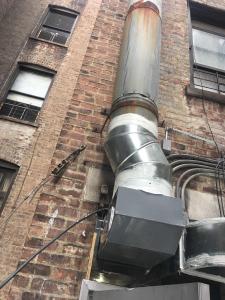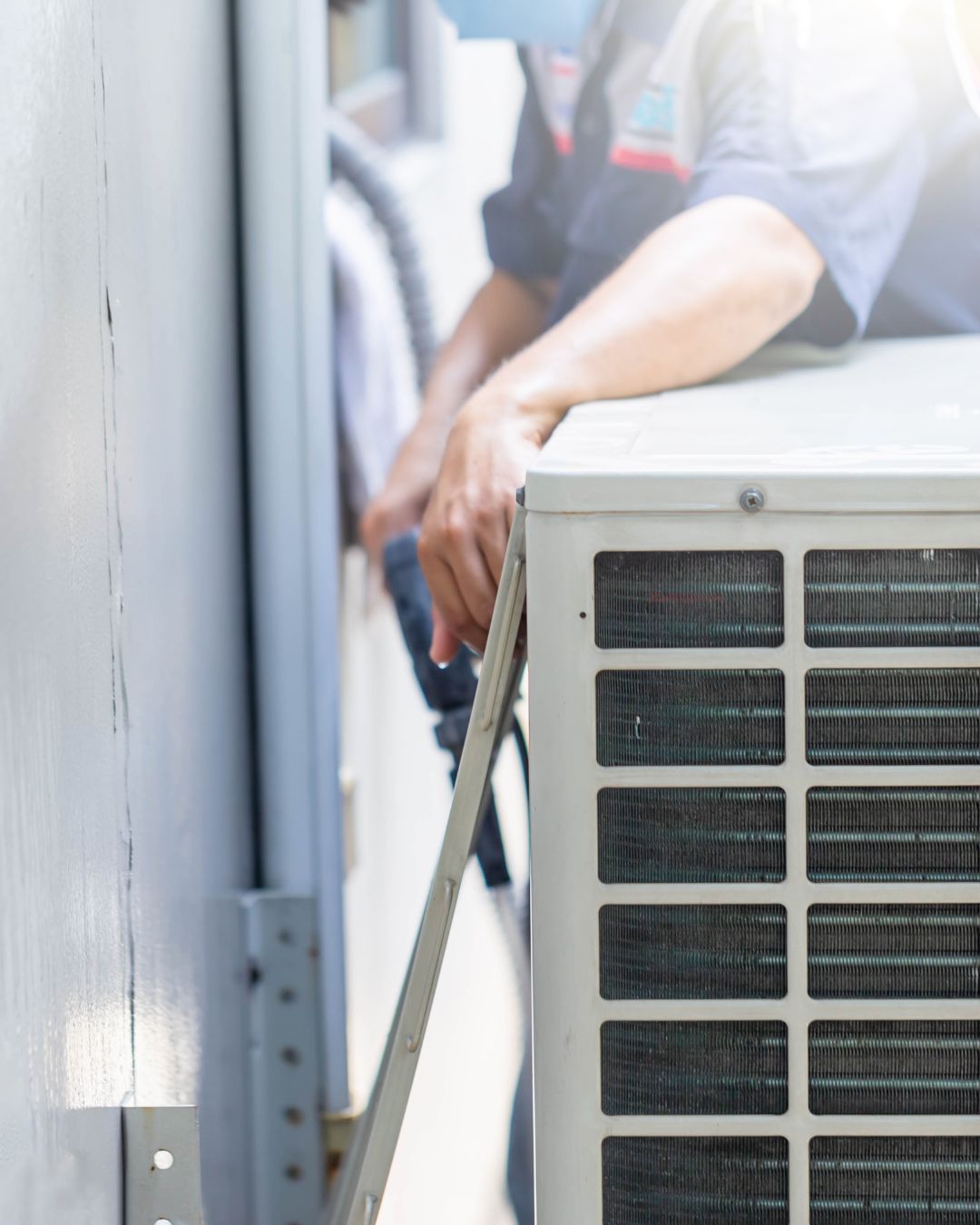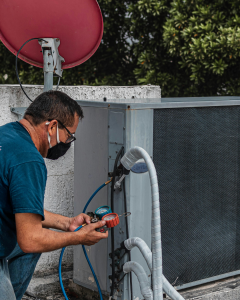The Cost of Safety and Compliance: The Reality of Maintaining Restaurant Exhaust Hoods, Grease Traps, and Ducts in NYC
Running a restaurant in New York City isn’t just about great food and service it’s also about safety, compliance, and smart budgeting.
BROOKLYN, NY, UNITED STATES, August 12, 2025 /EINPresswire.com/ -- Running a restaurant in New York City isn’t just about great food and service it’s also about safety, compliance, and smart budgeting. A critical yet often overlooked aspect of restaurant operations is the maintenance of kitchen exhaust systems, grease traps, and ductwork. These systems keep your kitchen safe from fires and environmental hazards, but they come with significant upkeep costs. For NYC restaurant owners, understanding the expenses and responsibilities associated with commercial hood installation, grease trap cleaning NYC, and duct maintenance is as essential as knowing the day’s menu.Opening a new restaurant or renovating an older kitchen brings the challenge of budgeting for one of the largest upfront expenses: the commercial hood installation. Restaurant exhaust hood systems are massive, engineered pieces of equipment designed to pull grease-laden smoke, heat, and odors out of the cooking area. In NYC, the price tag for a restaurant hood system installation can be eye-opening. Industry estimates show that installing a new commercial kitchen hood costs roughly $950 to $1,200 per linear foot, meaning a standard 10-foot hood could run around $10,000 just to install. That’s the baseline. In New York’s tight and complex buildings, costs tend to be on the higher end. Some local reports peg NYC hood installation at $1,500 to $2,000 or more per linear foot for a fully outfitted Type I grease hood system. “The initial sticker shock of a big hood can knock folks off their feet,” says James Marino, a veteran installer with Filta Kleen. “But I remind them that this isn’t just a fancy fan it’s a fire safety device. In a city like New York, you pay a premium to do it right, but doing it right is non-negotiable.”
Several factors influence the cost of a hood installation. City permits and code requirements add fees and sometimes design constraints. Buildings may require structural reinforcement to support the heavy stainless-steel canopy and ductwork. The choice of materials, such as custom stainless or copper hoods, and the complexity of running ductwork through a crowded building can increase the price further. Despite the costs, cutting corners is not an option NYC building and fire codes mandate strict standards for ventilation. Using licensed commercial hood installers who know local codes is crucial to avoid costly mistakes. “We’ve seen DIY hood jobs fail inspections and end up costing double to fix,” notes Marino. His advice to new restaurateurs is straightforward: “Budget realistically for the hood system from day one. It’s literally the centerpiece of a safe kitchen.”
For restaurants handling frying, grilling, or any cooking with fats and oils, grease trap cleaning is another essential and ongoing expense. Grease traps, or interceptors, capture fats, oils, and grease from wastewater before it reaches city sewers. In New York, keeping these grease traps clean is not just good practice it’s the law. The City’s Department of Environmental Protection (DEP) requires all food service establishments to install properly sized grease interceptors and maintain them so they never overflow. In practical terms, that means scheduling regular clean-outs, typically every 90 days or less. High-volume restaurants, such as busy fast-food spots or barbecue joints, might even require monthly service to remain compliant. “New York inspectors don’t mess around with grease traps,” says Elena Rodriguez, an environmental compliance officer at Filta Kleen. “We tell our clients: don’t wait for a clog or a violation. By the time you smell something funky, it’s already too late.”
From a budgeting standpoint, grease trap cleaning NYC services usually involve hiring a licensed waste oil hauler or plumbing company. Costs vary with the size of the trap and the frequency of pumping. On average, a routine grease trap pump-out for a mid-sized restaurant might range from a few hundred dollars per service. Industry sources note that most businesses pay between $175 and $400 per cleaning for standard traps, with prices rising for larger or more complex systems. While the expense may seem like another line item, the alternative is much more costly. Neglecting a grease trap can lead to severe sewer backups, kitchen shutdowns, or public health violations. The DEP can issue fines of up to $10,000 per day for grease-related offenses. “I’ve seen places hit with huge fines and forced to close for grease violations,” Rodriguez adds. “A regular $300 cleaning is a drop in the bucket compared to a $10,000 fine or an emergency plumbing bill.”
Filta Kleen workers know the resistance restaurant owners sometimes have toward this type of upkeep. “We get it, nobody gets excited about grease traps,” laughs Rodriguez. “It’s like the toothbrush flossing of the restaurant world not fun, but skip it and you’re in big trouble. In this town, you gotta stay ahead of it.”
Kitchen exhaust hoods and ducts can be out of sight and out of mind until a grease fire makes them impossible to ignore. Research from the National Fire Protection Association (NFPA) shows that cooking equipment is the leading cause of restaurant fires, and one in five of those fires has “failure to clean” as a contributing factor. Grease buildup in hoods, fans, and ducts can ignite in a flash, turning a busy kitchen into a dangerous blaze. This is why regular cleaning of exhaust hoods and ducts isn’t just recommended it’s required in NYC under NFPA 96 and enforced by the FDNY. Insurance companies also expect restaurants to maintain proof of professional hood cleanings on a set schedule. For most establishments, a semi-annual cleaning is the minimum, though many opt for quarterly service, and high-risk kitchens may require monthly cleanings under NFPA guidelines.
Budgeting for these cleanings means accounting for professional labor, as restaurant hood cleaning is not a do-it-yourself job. In the New York area, restaurant hood cleaning services typically charge either hourly or flat rates. A two-person crew might run $125 to $175 per hour depending on the job’s complexity, with full cleanings often landing in the low four figures per visit. While this can feel like a sizable expense, it is an essential investment in protecting property, staff, and patrons. Shawn “Sal” Salerno, a Filta Kleen cleaning technician, explains it bluntly: “You skip one cleaning to save a few bucks, and you’re basically stacking matches in your ceiling. Not worth it, pal. We’ve got repeat clients who’ll tell ya a grease fire will cost you way more than a cleaning ever will.”
Proper exhaust maintenance extends beyond the visible hood canopy into the ductwork and up to the rooftop fan. Technicians scrape and power-wash duct interiors to bare metal to remove grease deposits, and they service the exhaust fan, which can fail without regular cleaning and lubrication. Many NYC restaurants also install rooftop grease containment systems, such as drip pans or filters, which require regular attention to prevent violations. Skipping these steps is both a fire hazard and a health risk. As Salerno puts it, “Clean your hood, because fire trucks are the most expensive cleaning crew in the world, you know what I’m sayin’?”
Even with consistent upkeep, repairs will be necessary. Restaurant kitchen hood repair becomes urgent when motors burn out, fan belts snap, or sensors fail often during peak service hours. A malfunctioning hood can force a full kitchen shutdown. Repair costs range widely, with minor fixes like a belt replacement costing a few hundred dollars, while major repairs such as a motor replacement can reach into the thousands. In NYC, restaurant exhaust hood repair services typically charge $150 to $300 per hour for labor, with specialized work costing more. The key to minimizing repair costs is catching issues early. “We tell clients to listen and look,” says Marvin Ortiz, a Filta Kleen service technician. “If your exhaust fan is making weird noises or your hood lights keep flickering, call us before it breaks completely. Nine times out of ten, a small fix now avoids a big fix later.”
Ortiz recalls one case where a diner delayed a $500 fan repair to avoid downtime. The fan failed on a Saturday night, filling the kitchen with smoke, shutting the restaurant down, and costing thousands in lost sales and emergency repair fees. In NYC’s competitive restaurant scene, downtime can be fatal to your bottom line. Planning ahead by setting aside a contingency budget for repairs is one of the smartest moves an owner can make.
Compliance is as much about who does the work as it is about how often it’s done. NYC regulations require certain tasks such as gas connections for hoods or grease interceptor installations to be handled by licensed professionals. Even when licenses aren’t mandated, experience matters. An improperly installed system might seem functional day-to-day but can fail at a critical moment. “From day one, get people who know New York City code and FDNY regulations,” advises Rodriguez. “This city has some unique requirements from filtration on charbroilers to clearance to combustibles. A pro installer will get it right, pull the permits, and you won’t have to tear things out later.”
Cleaning and repair companies should be FDNY-certified for hood cleaning and have the proper NYC Business Integrity Commission (BIC) licenses for waste grease hauling. Reputable providers also give documentation after each service, which becomes invaluable during inspections. Rodriguez explains, “If an inspector walks in, you can confidently pull out a log of cleanings and know everything’s up to date. That’s a good feeling. That’s how you stay off the front page of the news.” In a city known for strict enforcement, these professional relationships can mean the difference between smooth operations and costly downtime.
“Our best clients are the ones we hardly ever see in an emergency,” jokes Rodriguez Flita Kleen. “It’s true! We’re in there on schedule, doing our thing, and nothing dramatic ever happens. Boring is good in this line of work.”
For all the talk of costs, budgeting for maintenance is ultimately about prevention. The expenses whether thousands for a new hood installation, hundreds for quarterly grease trap cleaning NYC services, or an occasional emergency repair should be anticipated and built into the restaurant’s annual budget. A well-maintained exhaust system reduces fire risk; a regularly cleaned grease trap prevents foul odors and sewer backups. Industry guides consistently note that spending a few hundred dollars on regular service saves thousands in emergency costs and lost revenue from closures. Insurance providers may also require proof of maintenance, and having thorough records can influence the outcome of claims.
Some owners allocate a set percentage of monthly sales toward maintenance, while others time major services for slower seasons to manage cash flow. “Plan for the boring stuff before it gets exciting,” Rodriguez advises. “Schedule cleanings when you’re not slammed, replace things before they die, and always have a rainy-day fund for the kitchen. Here in New York, I’ve seen it all the places that plan ahead and the ones that wing it. Trust me, you want to be the planner.”
In the end, safety and compliance are inseparable. Fire codes and environmental regulations exist to protect everyone owners, employees, customers, and the community. While it’s easy to see them as burdens, those who stay ahead of the rules often enjoy longer, more stable operations. As Salerno sums it up with a grin, “If you can make it here, you can make it anywhere and part of making it is keeping your kitchen in shape. Do that, and you’ll sleep better at night, I guarantee it.” In a city that never sleeps, that peace of mind is worth every penny.
Gabriel Jean
Safety Group Corp.
+1 3474454880
email us here
Visit us on social media:
LinkedIn
Instagram
Facebook
Legal Disclaimer:
EIN Presswire provides this news content "as is" without warranty of any kind. We do not accept any responsibility or liability for the accuracy, content, images, videos, licenses, completeness, legality, or reliability of the information contained in this article. If you have any complaints or copyright issues related to this article, kindly contact the author above.




